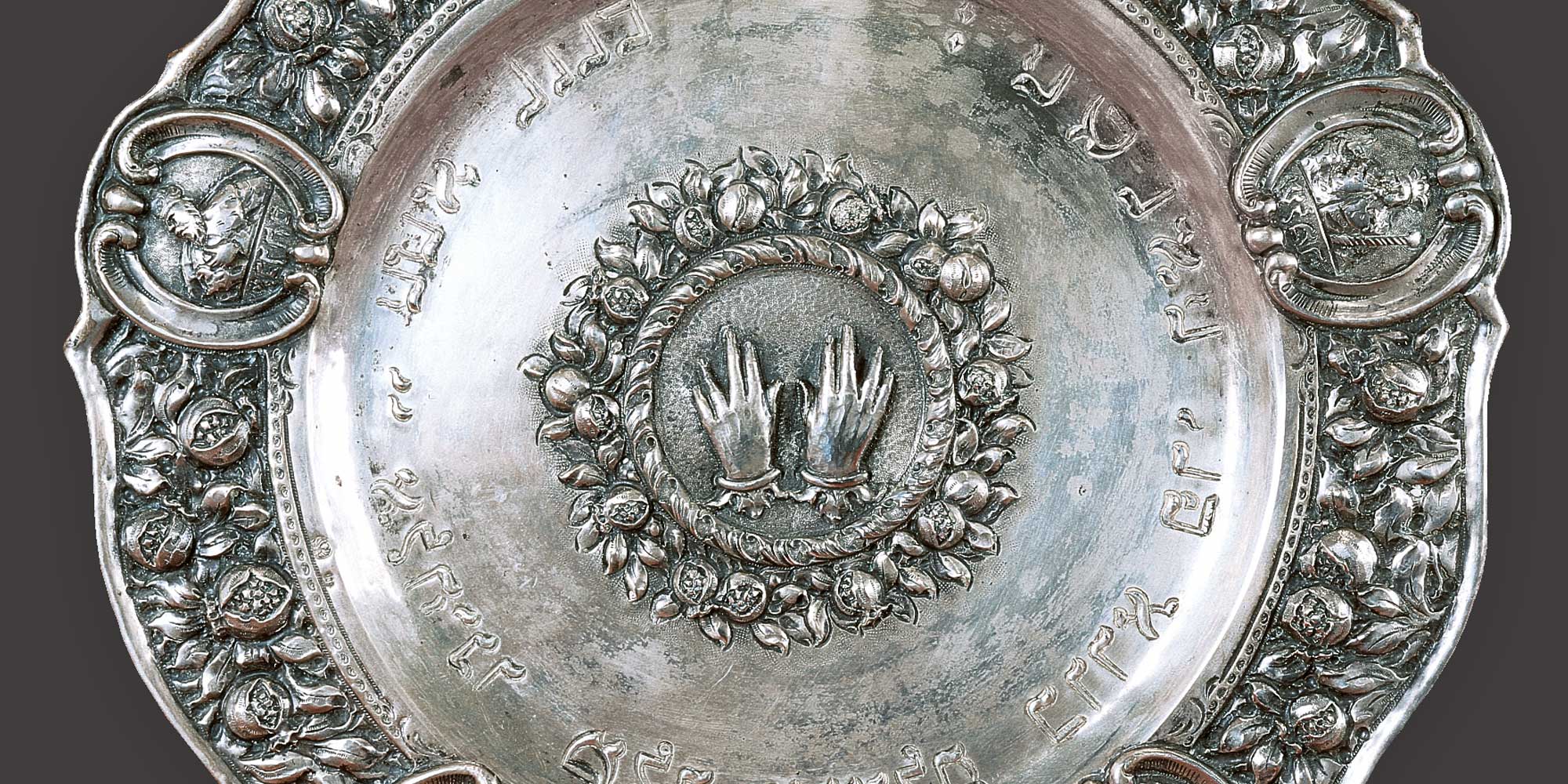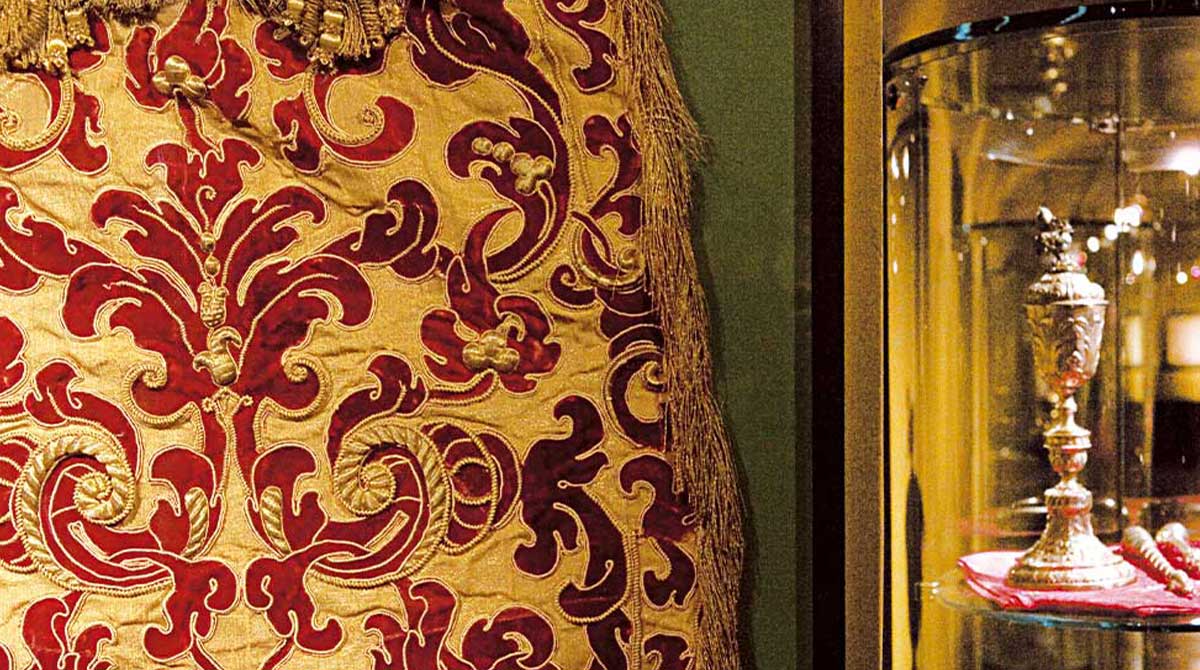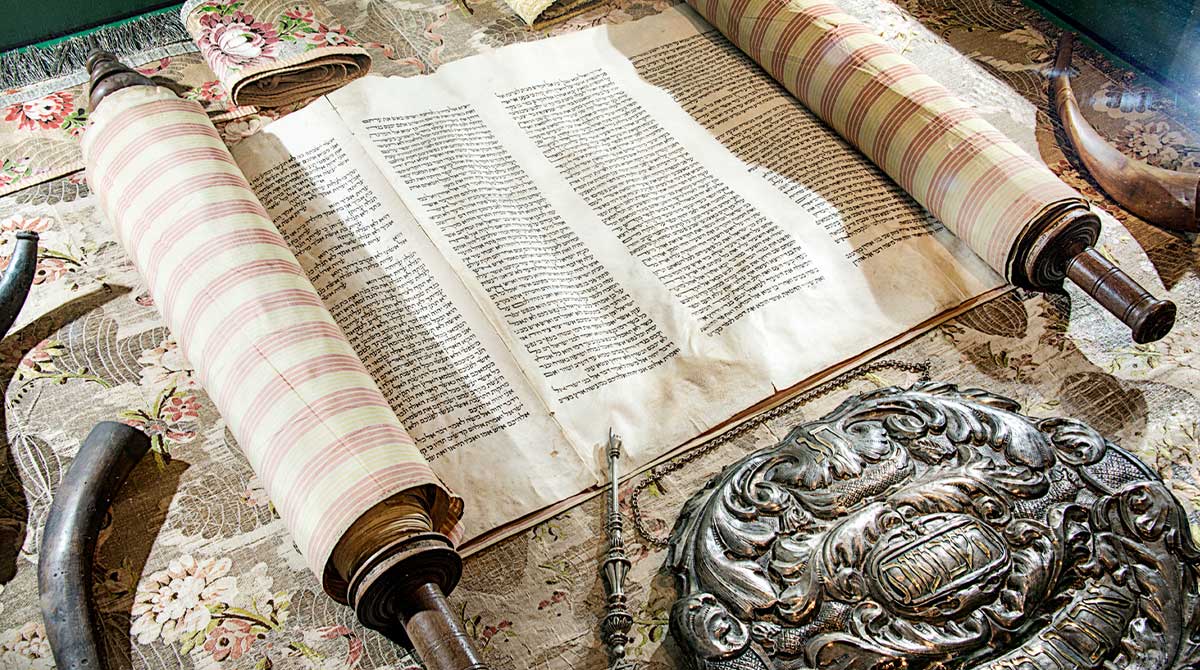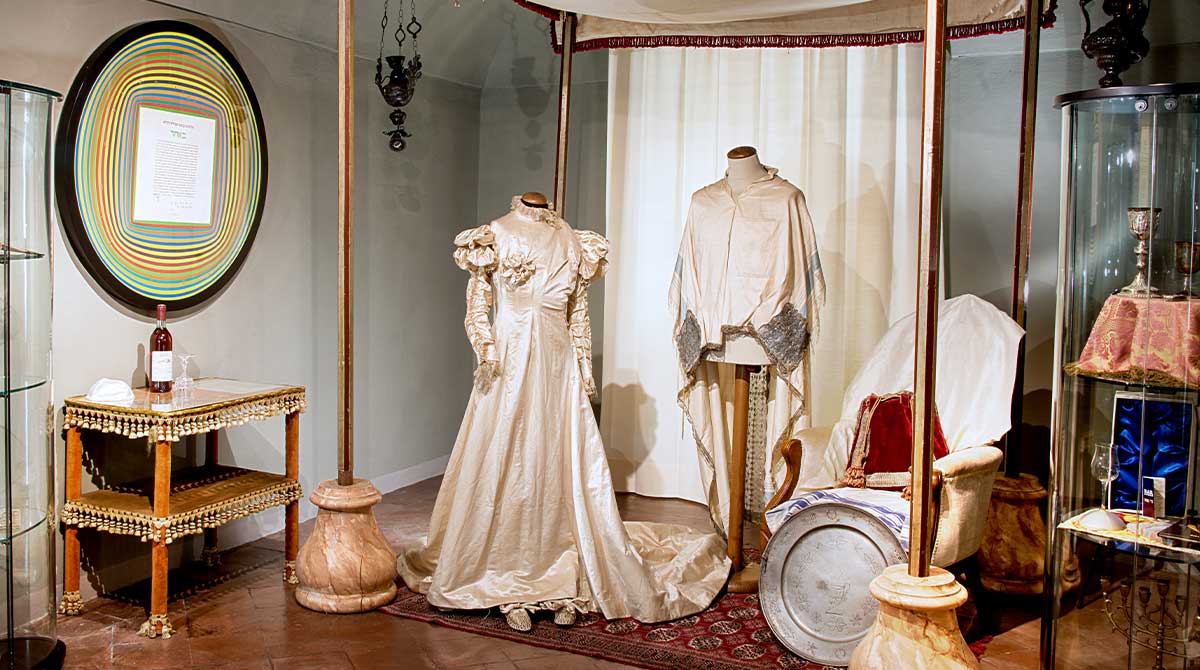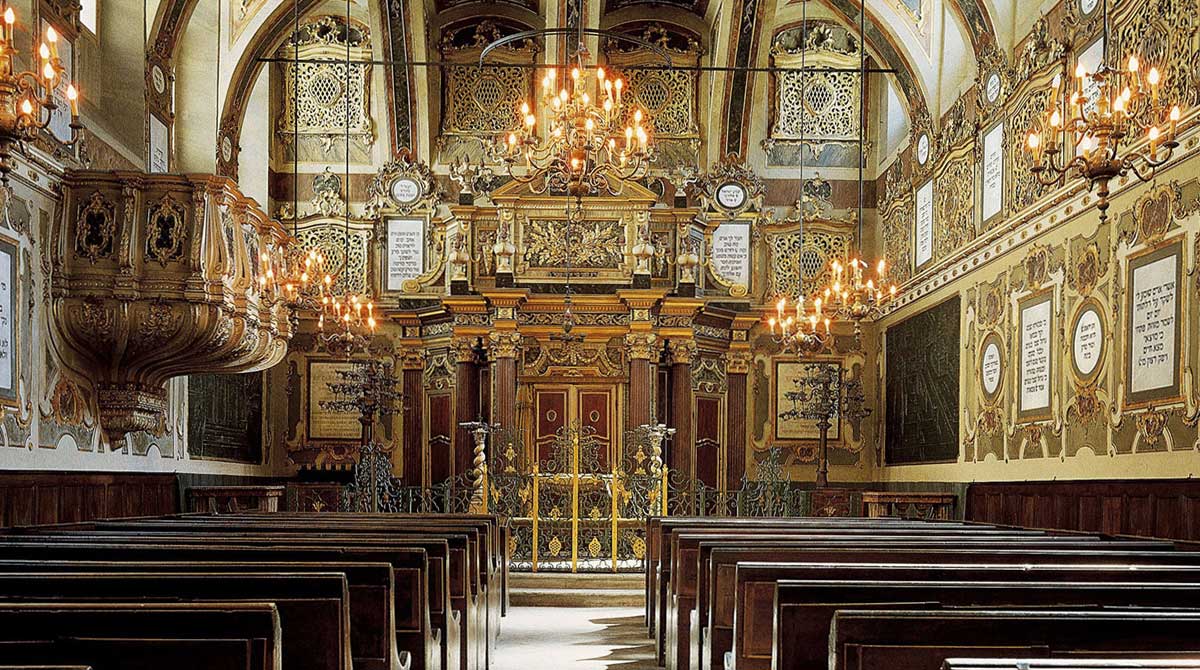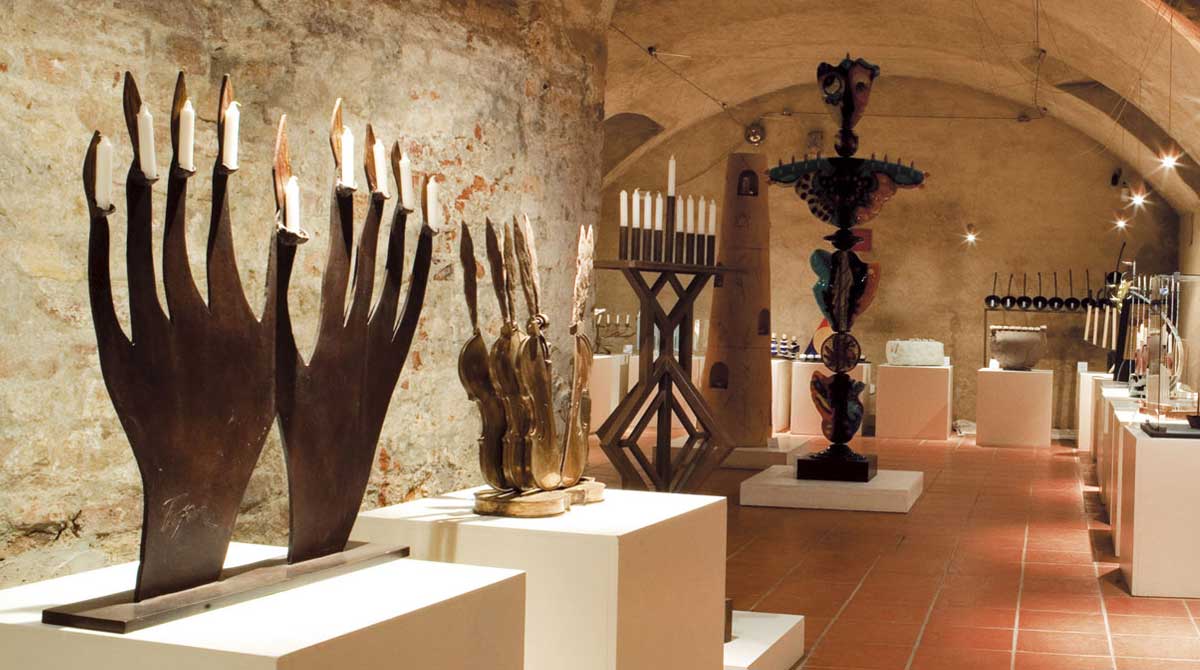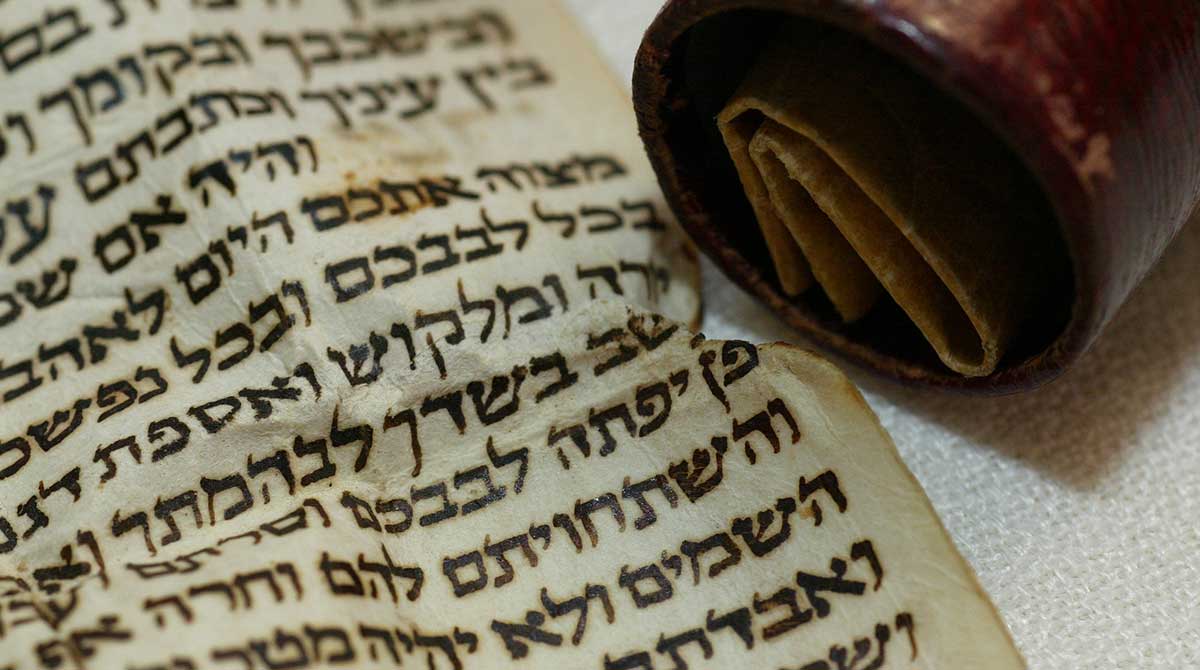One of the finest Jewish art collection in Europe
The Museum of Ancient Jewish Art and History, also known as the Silver Museum, houses one of the most important collections of Jewish art and history in Europe. The museum was conceived in 1969 by the architect Giulio Bourbon, after the restoration of the synagogue was completed, as part of the project to reopen the Jewish complex to visitors. The museum is located in the former women’s gallery of the synagogue and on the first and second floors of the two buildings that make up the museum complex.
The women’s gallery houses an extraordinary collection of artifacts, in particular silver ceremonial objects and textiles mainly made of silk embroidered with silver and gold thread lace. On the second floor is the part of the museum that presents the main aspects of Jewish life to visitors, using original ritual objects placed in educational settings.
Other themes and aspects of Jewish culture and life are brought to life by a mixed collection, consisting of objects with different uses, origins and dates. For example, the unusual micrographic portraits of Moses, Solomon and King David stand out, made entirely using tiny Hebrew letters to form the image. Each portrait contains a different text from the Bible: the Exodus, the Song of Songs and the Book of Psalms. Or the two magnificent wooden Tablets of the Law, probably belonging to the Ark of an ancient synagogue, which were found in a basement, probably destined to burn in some fireplace. The discovery, rescue and subsequent restoration of this splendid work of art is due to the family of Giorgio Ottolenghi.
The collection as a whole is a collection of ritual objects and artifacts of great importance, both as narrative tools and as high quality artifacts. The objects that make up the collections relate to three main themes: Torah, Silverware and Fabrics, Jewish Holidays and Family Life.
Other places to visit
